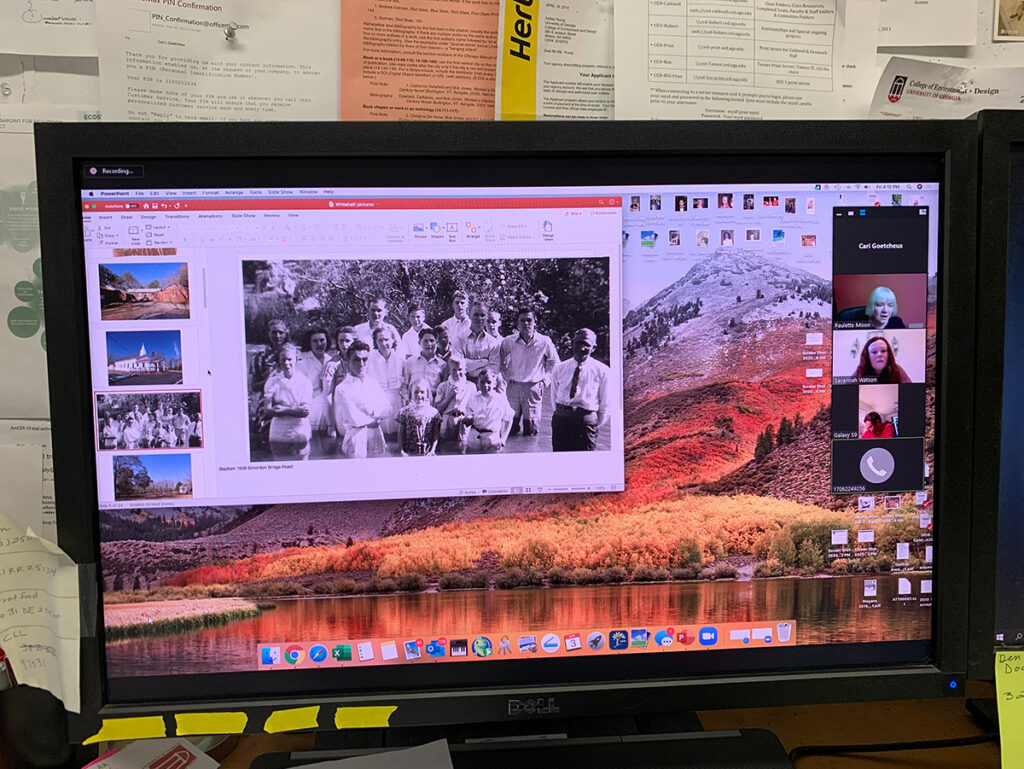First-year graduate Historic Preservation students are researching the history of Whitehall Mill and Mill Village located in southern Clarke County, Georgia as part of their required coursework this semester. As one of the first mills built in Georgia and Athens, many historic resources still exist to tell its story, including the 1890s mill buildings, the 1830s mill race, and phases of mill village housing developments in the 1830s and 1880s.

Two sites, the mill complex and the mill owner’s home (Whitehall), were listed on the National Register of Historic Places in 2002 and 1980 respectively, yet the mill village has not yet been designated. Students in the Introduction to Cultural Resources Assessment course are pulling together contextual research to assist in crafting a National Register Nomination that to combine all pieces of Whitehall’s story together: the mill, the mill village and the owner’s home. As a part of that research, four residents, aged 70 to 92, agreed to do oral history interviews with the students just as the COVID-19 pandemic was beginning to hit the US.
To understand the essence of Whitehall as a community, gathering firsthand knowledge of how the mills ran, the nature of mill work, an daily happenings in the mill village was critical. However, social distancing required students to determine how best to go about interviewing the residents.

Luckily, some of the interviewees were quite computer savvy and agreed to do interviews using Zoom video conferencing. Some residents showed the students historic photographs and newspaper articles found as a part of the residents’ own research on Whitehall. For those interviewees who did not have or feel comfortable with computers, students conducted group telephone interviews.
As a result of student efforts and cooperation by residents, little-known insights about life in Whitehall Mill Village can now be added to the contextual research for the proposed Whitehall Mill Village draft National Register nomination.

